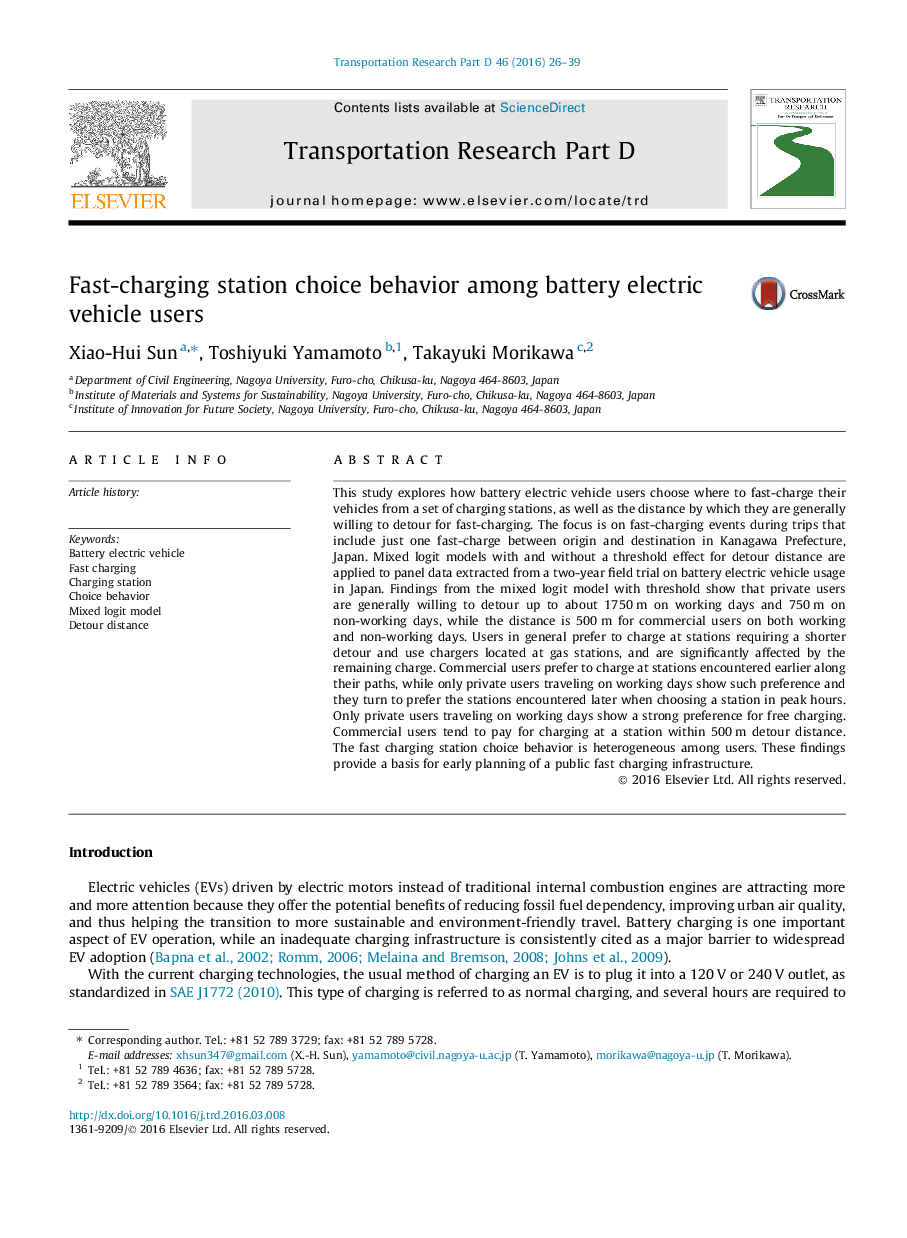| Article ID | Journal | Published Year | Pages | File Type |
|---|---|---|---|---|
| 7499590 | Transportation Research Part D: Transport and Environment | 2016 | 14 Pages |
Abstract
This study explores how battery electric vehicle users choose where to fast-charge their vehicles from a set of charging stations, as well as the distance by which they are generally willing to detour for fast-charging. The focus is on fast-charging events during trips that include just one fast-charge between origin and destination in Kanagawa Prefecture, Japan. Mixed logit models with and without a threshold effect for detour distance are applied to panel data extracted from a two-year field trial on battery electric vehicle usage in Japan. Findings from the mixed logit model with threshold show that private users are generally willing to detour up to about 1750Â m on working days and 750Â m on non-working days, while the distance is 500Â m for commercial users on both working and non-working days. Users in general prefer to charge at stations requiring a shorter detour and use chargers located at gas stations, and are significantly affected by the remaining charge. Commercial users prefer to charge at stations encountered earlier along their paths, while only private users traveling on working days show such preference and they turn to prefer the stations encountered later when choosing a station in peak hours. Only private users traveling on working days show a strong preference for free charging. Commercial users tend to pay for charging at a station within 500Â m detour distance. The fast charging station choice behavior is heterogeneous among users. These findings provide a basis for early planning of a public fast charging infrastructure.
Related Topics
Life Sciences
Environmental Science
Environmental Science (General)
Authors
Xiao-Hui Sun, Toshiyuki Yamamoto, Takayuki Morikawa,
